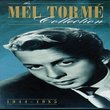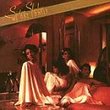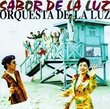| All Artists: Harawi, Shelton, Constable Title: Messiaen: Harawi - Songs of Love & Death / Shelton, Constable Members Wishing: 0 Total Copies: 0 Label: Koch Int'l Classics Release Date: 1/19/1999 Genres: Pop, Classical Styles: Vocal Pop, Opera & Classical Vocal Number of Discs: 1 SwapaCD Credits: 1 UPC: 099923729228 |
Search - Harawi, Shelton, Constable :: Messiaen: Harawi - Songs of Love & Death / Shelton, Constable
 | Harawi, Shelton, Constable Messiaen: Harawi - Songs of Love & Death / Shelton, Constable Genres: Pop, Classical
Completed in 1945, Harawi has Messiaen taking his cue from the centuries-old Tristan and Isolde legend and extending the tale into new musical realms. Messiaen cottoned to a rhythmic approach that decades later seems uneve... more » |
Larger Image |
CD Details
Synopsis
Amazon.com
Completed in 1945, Harawi has Messiaen taking his cue from the centuries-old Tristan and Isolde legend and extending the tale into new musical realms. Messiaen cottoned to a rhythmic approach that decades later seems uneven or, at least, artfully unsteady. Harmonically, Messiaen weaves in his fascination with bird songs, which begin appearing in the second movement's piano solo. Later in the piece, as the lovers near their death--a fate ensured in the piece by the very title song, a Peruvian-Quecha word for a love song whose lovers perish--the music becomes more extravagant and prickly. Piano trills teeter between two atonal resolutions, wavering threateningly. Meanwhile soprano Lucy Shelton edges her voice closer and closer to a whirling explosion of passion as John Constable abuts his jarring phrases with knotted slams. Shelton dons the mournful mantle too, pushed to emotive depths by Constable's excellent balance of clearly struck notes and hovering resonance (here Constable sounds like Aki Takahashi doing Morton Feldman). Messiaen loved the Tristan and Isolde tale enough to base a trilogy on it, and from the close-knit economy of these duos, he would launch into the Turangalîla-symphonie (captured excellently by Yan Pascal Tortelier and the BBC Philharmonic on a 1998 Chandos recording) and round out the threesome with Cinq Rechants (available on yet another fine Chandos recording, Pupils of Messiaen. This is a striking rendition of the set's front door. --Andrew Bartlett
Similar CDs
| Various Artists Atl Jazz: Keyboards Genres: Blues, Jazz, Pop Label: Rhino / Wea | |

 Track Listings (12) - Disc #1
Track Listings (12) - Disc #1


